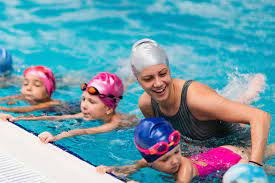For many Australians, swimming is second nature. From school programs to backyard pools, it’s something we grow up with. But the skills behind water safety aren’t picked up by chance—they’re taught by certified instructors who’ve completed a water safety course and committed to making our communities safer, one stroke at a time.
If you’re considering becoming a swim teacher, one of the first questions you’ll ask is: how long does it take to be a swimming teacher?
Let’s dive into the timeline, training, and real-life stories that bring this vital profession to life.
Why Water Safety Matters—For Everyone
Australia’s relationship with water runs deep. With over 35,000 kilometres of coastline, and more than 10 million people visiting beaches annually, we’re never too far from the water.
But this access comes with risk. According to the National Drowning Report, more than 280 people lost their lives to drowning in 2023—many in situations that could have been avoided with better water awareness.
That’s where trained swimming teachers come in. These professionals help Australians of all ages gain the skills they need to be confident and safe in aquatic environments.
The Fast-Track: How Long Does It Actually Take?
The path to becoming a certified swim teacher isn’t long—but it does require commitment. Most people can complete their water safety course in as little as 6 to 12 weeks, depending on availability and the pace of the training.
Here’s a breakdown of what’s involved:
1. Online and In-Person Training Modules (2–4 Weeks)
The course kicks off with theory modules that cover essential topics like:
- Principles of water safety
- Lesson planning and teaching strategies
- Emergency responses and basic first aid
- Understanding student needs across age groups
Depending on your provider, these modules may be completed online at your own pace or through structured classes.
2. In-Water Practical Training (1–2 Weeks)
This is where the learning comes to life. You’ll get hands-on experience teaching real participants under supervision. It’s also your chance to demonstrate swimming competency and how you apply teaching techniques in real scenarios.
3. Workplace Practical Hours (4–6 Weeks)
After the core course, you’ll be expected to complete a series of supervised hours at an approved aquatic facility. This part helps bridge the gap between training and employment and gives you the chance to build confidence in a real-world setting.
4. CPR and First Aid (1 Day)
You’ll also need to hold a current CPR certificate, which is typically a one-day course. Some training providers include this as part of the main course.
Altogether, you could be poolside and teaching within two to three months from your first day of enrolment.
What You’ll Learn During Your Water Safety Course
Completing a certified water safety course is more than just learning how to teach freestyle or backstroke. It’s about gaining the knowledge and instincts to guide people safely through every stage of learning to swim.
The course includes:
- Identifying hazards in different aquatic environments
- Managing group behaviour and keeping students engaged
- Structuring lessons by age, ability and learning style
- Responding quickly and calmly to emergencies
- Encouraging water confidence through positive reinforcement
Whether you’re teaching kids their first kicks or helping adults overcome past trauma, these skills prepare you to teach with clarity, patience, and purpose.
A Day in the Life: Swim Teacher in Action
Let’s meet Lauren, a 32-year-old swim teacher from Adelaide. She signed up for a water safety course after volunteering at a school holiday program.
“I was always a strong swimmer,” she says, “but I never realised how different it is to teach someone to swim.”
Lauren now works part-time at a local aquatic centre, running classes for children aged three to twelve. “What I love most is watching the shy kids slowly open up—there’s nothing better than seeing their faces when they realise they can float on their own.”
Like many instructors, Lauren completed her training in under three months. “The in-water placement was the most valuable part. That’s where everything clicks.”
Career Benefits Beyond the Pool
Swim teaching isn’t just for people looking for casual weekend work. It’s also a springboard for those interested in:
- Aquatic program coordination
- Water therapy and rehabilitation
- Primary and secondary PE teaching
- Lifesaving, first aid training, or aquatic centre management
And because swim lessons are in demand year-round—especially in indoor facilities—it can become a reliable, long-term career for those who want flexibility and purpose.
Is It Right for You?
To succeed in this field, you don’t need to be an elite swimmer. But you do need:
- Confidence in the water
- Good communication and patience
- A passion for teaching and helping people grow
- Willingness to complete your CPR and background checks
If that sounds like you, then enrolling in a water safety course could be one of the most rewarding moves you make.
Final Thoughts
Learning to swim is a rite of passage for many Australians, but it doesn’t happen by itself. Behind every safe swimmer is a teacher who’s trained, qualified, and dedicated to building water confidence—one lesson at a time.
If you’re asking, how long does it take to be a swimming teacher?, the answer is: not long. In just a few short months, you could be in the pool helping others learn a skill that could save their life.
Take the plunge. A certified water safety course is your first step to making a meaningful impact—both in and out of the water.

